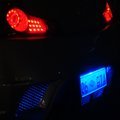Can evo's be imported under the 15yr old rule
Announcements
-
Latest Posts
-
By Murray_Calavera · Posted
True, but they can be flexible. I was at a property for a couple of years without a garage and we worked around it by parking the car in the backyard under a car cover. The car was not visible from the front of the property. I don't know if you can work some magic like this at your current place? I only have great things to say about Shannons. -
By joshuaho96 · Posted
This is less than what I pay and garage storage is required still but my age is considered too young for the value of vehicle. I'll probably renegotiate insurance on this car soon considering how little I drive it. -
Yeah that is true. I haven't seen any Australian auction prices for 34s. Did see a r33 gtst series 2 go for 21k at Lloyd's the other week. Definitely seems like people selling their Skylines that have sat in the front yard for the last 10 years are a little delusional.
-
By joshuaho96 · Posted
The exact direct fit seat belts are R33-specific. Should be able to get it from any Nissan dealer. -
https://www.facebook.com/autotainment/
-



Recommended Posts
Create an account or sign in to comment
You need to be a member in order to leave a comment
Create an account
Sign up for a new account in our community. It's easy!
Register a new accountSign in
Already have an account? Sign in here.
Sign In Now